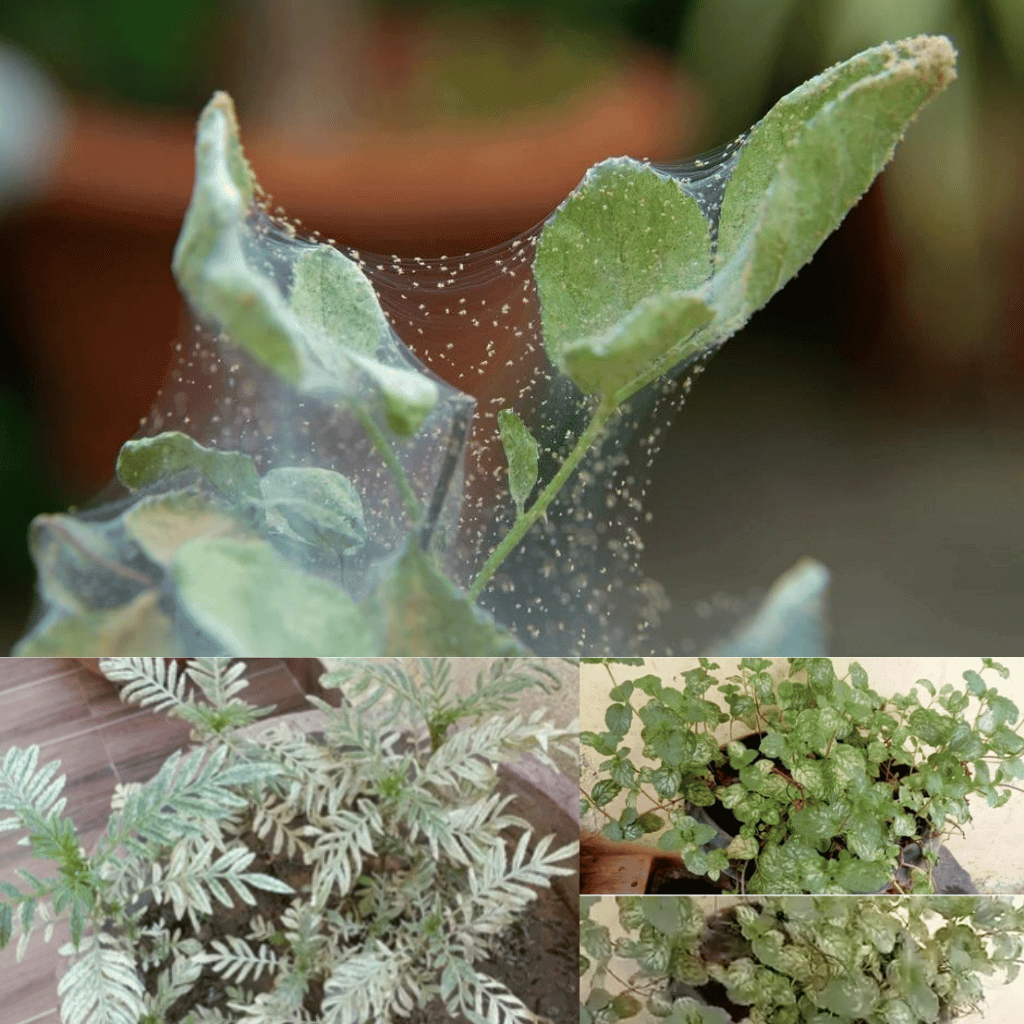Warning: count(): Parameter must be an array or an object that implements Countable in /home/u394529849/domains/gardeningideasandmore.com/public_html/wp-content/themes/twentytwentyone/template-parts/content/content-single.php on line 26
Stay aware and get rid of Spider mites naturally
What are Spider Mites?
These are the enemies of your Garden and these tiny pests are capable of completely destroying your Indoor and Outdoor Garden. These are related to spiders, ticks, and scorpions and they are not genuine insects.
How do they look?
Adults are oval-shaped and are reddish brown, and are around the size of a “full stop”. Their immature stages are similar to adults, however they are smaller.
Suitable Conditions for Spider mites
The Spider mites thrive in hot, dry climates, especially when their natural hunters have been killed by chemical usage. If your Garden is suffering from Spider Mites Infestation then don’t worry there are several ways by which we can Get rid of them naturally.
How to Identify Spider Mites infestation?
We must understand what the Infestation looks like and be able to identify the solution. Small yellow or brown patches on the plant leaves indicate infestation, it will suffer from poor health and acquire entirely yellow leaves and eventually stop growing. Spider mite damage can also be identified by the presence of spider web-like webbing on the plant. To check the presence of Spider mites, place a piece of paper under the leaves and gently shake them. If it’s spider mites, flecks that appear like pepper will fall on the paper.
How to get rid of Spider Mites Naturally?
The most effective and safe way of getting rid of Spider mites is the natural way. As most Spider mites are immune to the Pesticides, but the insects that prey on Spider mites, will die as a result. Therefore getting rid of spider mites naturally is the best and the safest way to eliminate these stubborn pests.
Natural ways of destroying Spider Mites:
-
Using Spraying Water:
You can wipe the Spider mites off of your plants with a strong spray of water . Rinse your plants with a hose a few times throughout the season. You must spray at the bottom of leaves, because it is where the spider mites live. Doing this also removes dust from the leaves, which is the favorite place for spider mites to hide in.
-
Rubbing Alcohol
Rubbing Alcohol will kill Spider mites. Just soak the cotton balls with rubbing alcohol and wipe the infested houseplant leaves. Then let it rest on the plants for a few hours before you thoroughly rinse the leaves with water. You can also use hand sanitizer.
-
Neem Oil:
Neem oil is a universal insect repellent that suffocates spider mites when applied. This is a longer-lasting solution and is used frequently, following an insecticidal soap application. Use only as instructed, and keep pets and children out of reach.
-
Using Predator Bugs:
Experts advise taking a hands-off approach in outdoor settings by using beneficial insects that prey on them. Lady bugs, predatory mites and lacewing are among them and they do not harm, people, plants & pets. This might result in getting rid of Spider mites naturally.
-
Keeping Plants in Check and taking extra precautions:
Monitoring your Garden for any infestation will allow you to actually prevent it or get effectively rid of the mites in the early stage.
The measures you can take in case of severe infestation are:
You should remove the affected leaves place them in a sealed plastic bag and dispose in the garbage. Don’t put them in the compost, as this can spread the problem. You might need to remove the entire plant in extreme cases
Note:
You should do the Oil treatments, such as Rubbing Alcohol, insecticidal soaps or chemical pesticides in the evening. Also, you can move the plants to the side, away from the sun and put them back in the evening. Otherwise, the Leaves may catch fire.
PREVENTION
Prevention is always better than cure. We can take some precautions to make sure that these pests don’t get a chance to attack our plants. The primary thing we must do is regularly monitor our garden and maintain good Hygiene.
-
Check before you buy:
You must inspect your Indoor/outdoor plants for any contamination, before you buy them.
-
Make sure plants are Healthy:
You must water and fertilize your houseplants regularly. Plants that are healthy are better able to endure pests and illnesses. Whereas plants that are weaker or stressed are more prone to issues.
-
Keep the Air around the Plants Humid:
Spider mites multiply quickly in dry environments and this is why you must maintain air humidity levels higher near plants.
-
Clean Everyday :
Cleaning regularly is extremely important as it helps to make sure pests don’t get extra hiding places. Therefore you must remove weeds and trash from areas of the garden where pests might hide.
-
Conclusion
This insect has a quick growth time, especially during warm weather when they lay eggs regularly, therefore you must take this into account while planning your management strategies. You must always repeat the treatment because, If eggs and larvae survive, then simply attacking the adults will be ineffective. Leaf shines and washes aid in the control and prevention of pests.

